Home>Articles>What’s A Solarium And How’s It Different From A Sunroom?
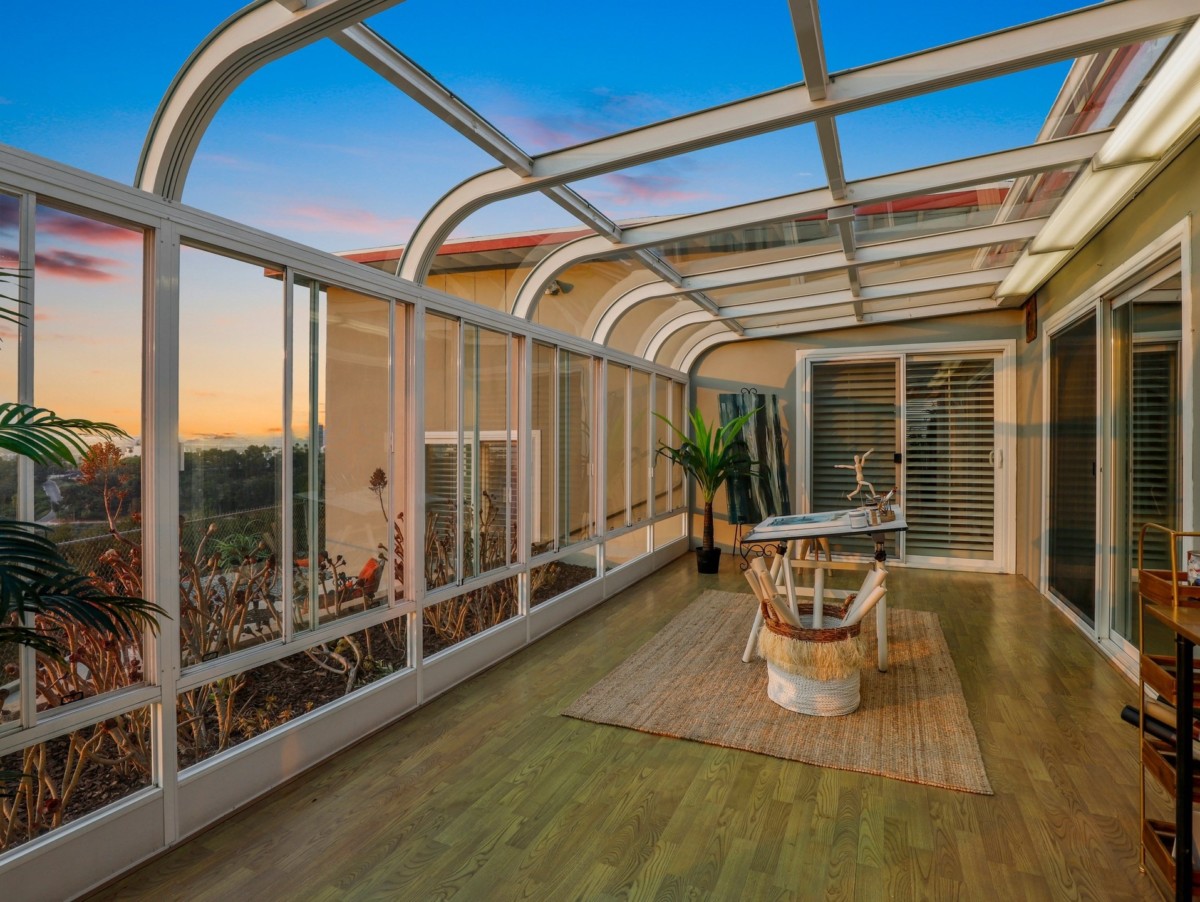

Articles
What’s A Solarium And How’s It Different From A Sunroom?
Modified: January 19, 2024
Discover the key differences between a solarium and a sunroom in this informative article. Gain insights into their unique features and benefits.
(Many of the links in this article redirect to a specific reviewed product. Your purchase of these products through affiliate links helps to generate commission for Storables.com, at no extra cost. Learn more)
Introduction
Welcome to the world of indoor-outdoor living spaces! If you’re looking to expand the usable square footage of your home and create a versatile space that connects you with nature, you may have come across two popular terms: solarium and sunroom. While these terms are often used interchangeably, they actually refer to different types of structures with distinct purposes and designs.
In this article, we’ll delve into the definitions of solariums and sunrooms, explore their key differences, and highlight the benefits and drawbacks of each. Whether you’re considering adding a new space to your home or simply want to satisfy your curiosity, we’ll provide all the information you need to understand these unique indoor-outdoor living spaces.
So, let’s kick things off with a closer look at what exactly a solarium is.
Key Takeaways:
- Solariums prioritize sunlight and nature, offering a serene space for relaxation, indoor gardening, and social gatherings. While they enhance property value, they require careful maintenance and may lack privacy in exchange for stunning views.
- Sunrooms provide versatile additional living space, connecting you with nature while protecting you from the elements. They offer flexibility for various uses, but may require additional heating or cooling solutions and careful consideration of privacy concerns.
Definition of a Solarium
A solarium, sometimes referred to as a solarium room or a conservatory, is a glass-enclosed structure that is designed to maximize exposure to natural light. It is typically attached to a building and constructed with large windows, glass panels, or even a glass roof, allowing for panoramic views of the surrounding outdoor environment.
Solariums are intended to create a seamless transition between indoors and outdoors, providing a space where you can enjoy nature’s beauty while being sheltered from the elements. They are commonly used as relaxation areas, greenhouse spaces for plants, or even as indoor gardens.
One of the defining features of a solarium is its emphasis on capturing sunlight. The extensive use of glass in its design allows for maximum sunlight penetration, creating a bright and airy atmosphere. This not only provides a visually appealing space but also helps to create a warm and inviting environment, especially during colder months.
Solariums can be found in various architectural styles, ranging from simple and modern designs to more elaborate and ornate structures. The size of a solarium can vary as well, from small extensions to larger spaces that can accommodate seating areas, dining sets, or even exercise equipment.
Now that we have a clear understanding of what a solarium is, let’s explore its counterpart, the sunroom.
Definition of a Sunroom
A sunroom, also known as a sun porch or a patio room, is another type of indoor-outdoor living space that provides a connection to the outdoors, but with a slightly different approach than a solarium. While a solarium is primarily focused on capturing sunlight, a sunroom is designed to offer a more versatile and functional living area that can be enjoyed year-round.
A sunroom is typically an extension of a house, featuring large windows and screens that allow for a balance between natural light and ventilation. These windows are often made of tempered glass or acrylic, providing insulation and protection from the elements while still allowing for outdoor views.
Unlike a solarium, which may have a glass roof, a sunroom usually has a solid roof that is connected to the rest of the house. This solid roof provides additional insulation and protection against weather extremes, making the sunroom suitable for use in various climates.
The primary purpose of a sunroom is to create an additional living space that can be used in multiple ways. Some common uses of a sunroom include a cozy sitting area, a home office, a dining room, or even a recreational space. The versatility of sunrooms allows homeowners to enjoy the beauty of nature while being protected from insects, rain, and excessive heat or cold.
Similar to solariums, sunrooms come in a variety of designs and sizes, allowing homeowners to choose a style that complements their home’s architecture and their personal preferences. Whether it’s a traditional sunroom with a gable roof or a more contemporary design, the goal is to create an inviting space that seamlessly blends with the rest of the house.
Now that we have defined both solariums and sunrooms, let’s take a closer look at the key differences between them.
Key Differences between a Solarium and a Sunroom
While solariums and sunrooms are both indoor-outdoor living spaces, there are several key differences that set them apart. Understanding these differences can help you determine which option is best suited for your needs and preferences.
1. Design and Construction:
A solarium is predominantly made of glass, with large windows, glass panels, or a glass roof. Its design is focused on capturing sunlight and providing unobstructed views of the outdoors. In contrast, a sunroom typically has a solid roof and is constructed with a combination of glass and other materials, such as fiberglass or aluminum. The emphasis of a sunroom is on creating a versatile living space that can be used year-round.
Read more: What Is A Sunroom Used For
2. Purpose and Function:
A solarium is primarily designed to serve as a space for relaxation and enjoying nature’s beauty. It can function as a greenhouse for plants or as an indoor garden. On the other hand, a sunroom is more multi-functional and adaptable. It can be used as a sitting area, a home office, a dining room, or even a recreational space. The purpose of a sunroom is to provide an additional living space that can be used in various ways.
3. Insulation and Climate Control:
Due to its abundance of glass, a solarium may have less insulation and may be more prone to temperature fluctuations. While it offers ample natural light, it may require additional heating or cooling to maintain a comfortable temperature throughout the year. In contrast, a sunroom is designed with better insulation and often has a solid roof, providing superior climate control. This makes it suitable for use in different climates and seasons.
4. Views and Privacy:
Because a solarium has extensive glass walls and roof, it offers stunning panoramic views of the surrounding outdoor environment. It provides a sense of openness and connection to nature. However, the abundance of glass can also compromise privacy, especially if the solarium is in a highly populated area. In contrast, a sunroom strikes a balance between views and privacy. The combination of solid walls and strategically placed glass allows for natural light and outdoor views while still providing a sense of privacy.
5. Cost and Maintenance:
The cost of building a solarium can vary depending on the size, design, and materials used. The extensive use of glass can make it more expensive compared to a sunroom. Additionally, solariums may require more frequent cleaning and maintenance due to the presence of glass surfaces. Sunrooms, on the other hand, may be more cost-effective to construct and maintain, especially if they have solid roofs and a simplified design.
Understanding these differences between solariums and sunrooms can help you make an informed decision when choosing the right indoor-outdoor living space for your home. Next, let’s explore the specific purposes and functions of a solarium in more detail.
Read more: What Furniture Is Best For A Sunroom
Purpose and Function of a Solarium
A solarium serves as a unique space within a home, offering a variety of purposes and functions that set it apart from other areas. Let’s take a closer look at the different ways in which a solarium can enhance your living environment.
1. Relaxation and Serenity:
One of the primary purposes of a solarium is to create a tranquil and peaceful space where you can unwind and recharge. With its abundant natural light and panoramic views of the outdoors, a solarium provides a serene environment that can help alleviate stress and promote relaxation. Whether you choose to read a book, do yoga, or simply enjoy a cup of tea, a solarium offers a soothing atmosphere that brings the beauty of nature indoors.
2. Greenhouse and Indoor Garden:
The ample sunlight that fills a solarium makes it an ideal environment for plants to thrive. Many homeowners use solariums as greenhouses or indoor gardens, allowing them to grow a variety of plants, flowers, and even herbs and vegetables. The glass walls and roof create a conducive atmosphere for photosynthesis, providing plants with the necessary light and warmth to flourish.
3. Social and Entertaining Space:
A solarium can also serve as a versatile gathering space for friends and family. With its bright and airy ambiance, it provides an inviting setting for hosting social gatherings, small parties, or intimate dinners. You can arrange seating areas or incorporate a dining table to create a cozy and unique space where you can entertain guests while enjoying the surrounding outdoor views.
Read more: What Is A Good Size For A Sunroom
4. Personal Fitness Area:
With its abundance of natural light and open atmosphere, a solarium can be transformed into a personal fitness space. Whether you prefer yoga, pilates, or other exercise routines, the solarium offers a bright and energizing environment to engage in physical activities. You can set up exercise equipment, create a designated workout area, and immerse yourself in the beauty of nature while staying active.
5. Art Studio or Craft Space:
The abundant natural light and inspiring views of a solarium make it an ideal space for artistic pursuits. Whether you’re a painter, sculptor, or enjoy crafting, a solarium can provide the perfect setting for your creative endeavors. The combination of natural light and the connection to the outdoors can stimulate your imagination and enhance your artistic expression.
These are just a few examples of the many purposes and functions a solarium can serve. Its versatility and unique design make it a cherished addition to any home, enriching the living experience and bringing the beauty of nature inside.
Now that we’ve explored the purpose and function of a solarium, let’s dive into the specific uses and benefits of a sunroom.
Purpose and Function of a Sunroom
A sunroom is a versatile living space that offers a range of functionalities, making it a valuable addition to any home. Let’s explore the various purposes and functions a sunroom can serve, highlighting its ability to enhance your living environment.
1. Additional Living Space:
A primary purpose of a sunroom is to provide extra living space in your home. Whether you need a dedicated area for relaxation, entertainment, or work, a sunroom offers a versatile and adaptable solution. It can function as a sitting area, a home office, a playroom for children, or even a dining room, depending on your needs and preferences. The additional living space provided by a sunroom can enhance the functionality and comfort of your home.
Read more: How To Decorate A Sunroom
2. Connect with Nature:
One of the key advantages of a sunroom is its ability to offer a seamless connection between the indoors and outdoors. With its large windows and screens, a sunroom allows you to immerse yourself in the beauty of nature while still being protected from the elements. It provides an opportunity to enjoy the views, observe the changing seasons, and bask in the natural light. This connection with nature can have a positive impact on your well-being and create a calming and rejuvenating atmosphere.
3. Relaxation and Entertainment:
A sunroom is an ideal space for relaxation and entertainment. Its bright and airy ambiance, combined with the surrounding outdoor views, creates a serene environment where you can unwind and spend quality time with family and friends. You can set up comfortable seating, create cozy reading nooks, or even incorporate a home entertainment system. The versatility of a sunroom allows for a wide range of activities, making it a gathering place for relaxation and socializing.
4. Indoor-Outdoor Dining:
A sunroom can serve as a delightful dining area, allowing you to enjoy meals while being surrounded by nature. Whether it’s a casual breakfast or a special dinner, the sunroom provides a unique dining experience. The natural light streaming in and the panoramic views create an inviting atmosphere for enjoying your meals. You can set up a dining table and decorate the space with plants and flowers, enhancing the ambiance and making every meal a memorable experience.
5. Home Office or Study:
A sunroom can be transformed into a peaceful and inspiring home office or study space. With its abundance of natural light, the sunroom offers a bright and positive environment for work or study. Setting up a desk, comfortable seating, and organizing your books and supplies can create a conducive space for productivity and focus. The connection to the outdoors can also provide a refreshing break and boost your creativity.
These are just a few examples of the many purposes and functions a sunroom can serve. Its versatility and ability to connect with nature make it a valuable asset to any home, providing additional living space and enhancing your overall living experience.
Now that we’ve explored the purpose and function of both solariums and sunrooms, let’s move on to discuss the design and construction aspects of a solarium.
Read more: How To Seal A Sunroom
Design and Construction of a Solarium
The design and construction of a solarium are crucial factors that determine its aesthetic appeal, functionality, and durability. Let’s delve into the key aspects of designing and constructing a solarium, from the materials used to the architectural considerations involved.
1. Materials:
When it comes to the construction of a solarium, glass is the star of the show. The extensive use of glass in a solarium allows for maximum sunlight penetration and unobstructed views of the surrounding environment. The glass used is typically tempered for safety and may include energy-efficient or low-emissivity coatings to regulate temperature and reduce UV radiation. Additionally, other materials such as metal frames, laminated beams, and durable supports are used to provide structural integrity and support the weight of the glass panels or walls.
2. Design Considerations:
Solarium designs can vary significantly, ranging from simple and modern to ornate and elaborate. Some key design considerations include:
- Orientation: Solariums are typically designed to face south, as this maximizes exposure to sunlight throughout the day. The orientation takes into account the positioning of the sun and the surrounding landscape to optimize natural light and heat gain.
- Roof Design: The roof design of a solarium can vary from a gable design (peak-shaped) to a curved or sloped shape. The roof design helps to shed rainwater and snow while providing adequate drainage.
- Ventilation: Proper ventilation is essential to regulate temperature and maintain air quality within the solarium. This can be achieved through strategically placed windows, vents, or operable skylights.
- Structural Support: Consideration is given to the structural support required to ensure the stability of the solarium. Load-bearing walls, columns, and beams are designed and incorporated to support the weight of the glass panels or walls.
3. Permits and Building Codes:
Before embarking on the construction of a solarium, it is important to obtain the necessary permits and adhere to local building codes. Building regulations may specify requirements such as minimum size, setback distances, and compliance with energy efficiency standards. It is advisable to consult with local authorities or work with a professional contractor to ensure compliance with all building regulations.
Read more: How Is Crystal Different From Glass
4. Professional Installation:
Given the complexity of designing and constructing a solarium, it is recommended to hire experienced professionals for the installation. Professional contractors and architects have the knowledge and expertise to navigate the design process, obtain necessary permits, and ensure the structural integrity and safety of the solarium. They can also provide valuable insights and recommendations based on your specific preferences and requirements.
The design and construction of a solarium require careful planning, expertise, and attention to detail. By considering the materials, design elements, building codes, and professional installation, you can create a solarium that seamlessly blends with your home and enhances your indoor-outdoor living experience.
Now that we’ve explored the design and construction aspects of a solarium, let’s move on to discuss the design and construction of a sunroom.
Design and Construction of a Sunroom
The design and construction of a sunroom are crucial elements that influence its functionality, aesthetics, and overall quality. Let’s dive into the key considerations involved in designing and constructing a sunroom, from the architectural aspects to the materials used.
1. Architecture and Integration:
When designing a sunroom, it is essential to consider the architectural style and existing structure of your home. The goal is to create a seamless integration between the sunroom and the rest of the house. Matching the rooflines, exterior materials, and overall design aesthetic helps to maintain visual harmony and coherence. Whether your home has a traditional or modern architectural style, the sunroom should complement the existing aesthetics rather than appear as an afterthought.
2. Windows and Walls:
The design of a sunroom revolves around the strategic use of windows and walls to balance natural light, views, and ventilation. Windows play a crucial role in maximizing sunlight penetration while minimizing heat loss or gain. High-quality windows with good insulation properties help maintain a comfortable temperature inside the sunroom throughout the year. Walls, on the other hand, provide insulation and structural support. Depending on your preferences and local regulations, walls can be partially or entirely composed of glass or other materials.
Read more: What Is A 3-Season Sunroom
3. Roofing and Insulation:
The roofing system of a sunroom is a significant consideration. It should be designed to withstand weather conditions, provide insulation, and allow for proper drainage. Depending on the architectural style and climate, options include gable roofs, shed roofs, or even flat roofs with sufficient slopes. Additionally, insulation is crucial for a sunroom’s comfort and energy efficiency. Insulated roofs and walls help regulate the temperature, reducing heat loss in colder months and minimizing heat gain during hot summers.
4. Flooring and Finishes:
The choice of flooring and finishes for a sunroom is essential for both aesthetics and functionality. The flooring should be durable, resistant to temperature fluctuations, and easy to maintain. Popular options include ceramic tiles, engineered wood, or even stained concrete. As for finishes, consider incorporating materials that harmonize with the rest of your home, such as trim, molding, and paint colors.
5. HVAC and Electrical Considerations:
Proper HVAC (heating, ventilation, and air conditioning) and electrical planning are critical for a comfortable and functional sunroom. Depending on your climate, additional heating or cooling may be required to regulate temperature in extreme weather. Adequate ventilation is also essential, ensuring fresh airflow and preventing condensation. Additionally, carefully planned electrical outlets, lighting fixtures, and wiring are necessary to accommodate various uses and appliances in the sunroom.
6. Permits and Building Codes:
Before starting the construction of a sunroom, it is important to research and acquire the necessary permits and comply with local building codes. Building regulations may address aspects such as minimum square footage, setbacks, insulation requirements, and electrical standards. It is advisable to consult with local authorities or work with a professional contractor who is familiar with the building codes in your area.
Read more: What Are The Best Windows For A Sunroom
7. Professional Construction:
Due to the complexity involved in designing and constructing a sunroom, it is recommended to hire experienced professionals for the job. Professional contractors and architects can assist in the design process, obtain permits, and ensure that the construction is done according to industry standards. Their expertise ensures a structurally sound and visually appealing sunroom that meets your specifications and enhances your living space.
With careful planning, attention to architectural integration, and the use of quality materials, your sunroom can become a functional and visually captivating space that seamlessly extends your indoor living area into the beauty of the outdoors.
Now that we’ve explored the design and construction aspects of both solariums and sunrooms, let’s discuss the benefits and drawbacks of having a solarium.
Benefits and Drawbacks of a Solarium
A solarium offers a range of benefits, but it also comes with its own set of drawbacks. Understanding both the positives and negatives can help you make an informed decision about whether a solarium is the right addition for your home. Let’s explore the benefits and drawbacks of having a solarium:
Benefits:
1. Abundance of Natural Light:
One of the most significant benefits of a solarium is the abundance of natural light it provides. The extensive use of glass allows sunlight to flood the space, creating a bright and inviting atmosphere. Natural light is not only visually pleasing but also offers numerous health benefits, such as improving mood, boosting vitamin D levels, and enhancing productivity.
2. Connection to Nature:
A solarium provides a seamless connection to the outdoors, allowing you to enjoy nature’s beauty throughout the year. The panoramic views and the sense of being immersed in nature can create a calming and rejuvenating environment. It provides a tranquil space to relax, unwind, and escape from the demands of daily life.
3. Versatility of Use:
Solariums offer versatility in their use. They can serve as a sanctuary for relaxation, a greenhouse for plants, an indoor garden, or even a space for entertaining guests. The flexibility provided by a solarium allows you to adapt its function to fit your specific needs and preferences.
4. Potential Increased Property Value:
A well-designed and well-maintained solarium can add value to your home. The additional living space and the aesthetic appeal of a solarium can make your property more attractive to potential buyers. Additionally, the benefits of natural light and connectivity with nature may be seen as desirable features, increasing its appeal in the real estate market.
Drawbacks:
1. High Construction and Maintenance Costs:
Constructing a solarium can be costly due to the extensive use of glass and specialized materials. The price can vary depending on the size, design complexity, and quality of materials used. Additionally, solariums require regular cleaning and maintenance to keep the glass surfaces and support structures in good condition, which adds to the overall cost of ownership.
2. Limited Climate Control:
The abundance of glass in a solarium makes it more challenging to regulate temperature compared to other areas of the house. Solariums may experience higher heat gain in the summer and heat loss in the winter. While measures such as low-emissivity coatings and proper insulation can help mitigate temperature fluctuations, additional heating or cooling systems may be required to maintain a comfortable indoor environment throughout the year.
3. Privacy Concerns:
The extensive use of glass in a solarium means limited privacy, especially if the solarium is visible to neighbors or passersby. While window coverings, blinds, or curtains can offer some privacy, they may also hinder the amount of natural light and outdoor views that you can enjoy. Privacy concerns should be taken into account when considering the placement and design of your solarium.
4. Potential Glare and Fading:
The abundance of natural light in a solarium can lead to glare and potentially cause fading of furniture, upholstery, and artwork over time. Choosing the appropriate window treatments, UV-blocking films, or using UV-resistant materials can help reduce glare and minimize the impact of sun fading.
Ultimately, the decision to add a solarium to your home depends on your lifestyle, preferences, and budget. Considering the benefits and drawbacks can help you weigh the pros and cons and make an informed choice that aligns with your needs and enhances your living environment.
Now, let’s explore the benefits and drawbacks of having a sunroom.
Read more: What Color To Paint A Sunroom
Benefits and Drawbacks of a Sunroom
A sunroom can provide numerous benefits to homeowners, but it’s also important to consider the potential drawbacks. By understanding both the advantages and disadvantages, you can make an informed choice about whether a sunroom is the right addition for your home. Let’s explore the benefits and drawbacks of having a sunroom:
Benefits:
1. Additional Living Space:
One of the most significant advantages of a sunroom is the additional living space it provides. Whether you need a cozy sitting area, a home office, or a space to entertain guests, a sunroom offers versatile functionality. It can expand your usable square footage without the need for extensive renovations and can be adapted to your specific needs and preferences.
2. Indoor-Outdoor Connection:
A sunroom bridges the gap between indoor and outdoor living, allowing you to enjoy the beauty of nature while being protected from the elements. With large windows and screens, a sunroom provides panoramic outdoor views, fresh airflow, and a sense of connection to the natural surroundings. It creates a seamless transition, enhancing your living experience and bringing the outdoors inside.
3. Versatility in Use:
A sunroom offers versatility in how it can be utilized. It can serve as a relaxing reading nook, a dining area with a view, a playroom for children, or even a space for exercise and hobbies. The adaptability of a sunroom allows you to create a functional and personalized space that meets your specific lifestyle needs.
4. Natural Light and Vitamin D:
With its large windows and abundance of natural light, a sunroom fills your home with warmth and brightness. Natural light not only enhances the aesthetics of the space but also provides health benefits. The exposure to sunlight in a sunroom can boost your vitamin D levels, improve your mood, and support overall well-being.
Drawbacks:
1. Cost of Construction:
The cost of constructing a sunroom can be a significant drawback, depending on the size, design complexity, and materials used. The expenses can include materials, labor, permits, and electrical installations. It’s essential to budget accordingly and consider the return on investment in relation to your long-term plans for the property.
2. Temperature Regulation:
While a sunroom offers beautiful views and natural light, it can also be challenging to regulate the temperature. Without proper insulation and climate control measures, a sunroom may become too hot during summer months or too cold in winter. Additional heating, cooling, and insulation solutions may be necessary to ensure year-round comfort.
3. Maintenance and Cleaning:
Sunrooms require regular cleaning and maintenance due to their large windows and exposure to the elements. Glass surfaces, frames, and screens need to be cleaned to keep them in optimal condition. Additionally, the seals and weatherstripping should be checked periodically to ensure they remain intact and prevent any air or water leaks.
4. Limited Privacy:
The extensive use of windows in a sunroom can compromise privacy, especially if the sunroom is visible to neighboring properties. Even with window treatments, you may have to sacrifice some natural light or outdoor views to maintain privacy. Consider the placement and orientation of the sunroom in relation to your neighbors and surroundings to mitigate privacy concerns.
By considering the benefits and drawbacks of a sunroom, you can make an informed decision that aligns with your needs and preferences. Ultimately, the decision to add a sunroom to your home depends on your lifestyle, budget, and the overall value you believe it will bring to your living environment.
Now that we’ve explored the benefits and drawbacks of both solariums and sunrooms, let’s summarize our findings.
Conclusion
Solariums and sunrooms are both indoor-outdoor living spaces that offer unique benefits and functionalities. While solariums focus on capturing sunlight and creating a seamless connection with nature, sunrooms provide versatile additional living space that can be enjoyed year-round.
Solariums are characterized by their extensive use of glass, allowing for an abundance of natural light and panoramic views. They can serve as a tranquil space for relaxation, a greenhouse for plants, or an indoor garden. Solariums provide a unique connection with nature and can potentially increase the value of your property. However, they can be costly to build and maintain, require additional temperature regulation, and may lack privacy. On the other hand, sunrooms offer a flexible and adaptable living space that can be used for various purposes. With their strategic use of windows and walls, sunrooms provide a balance between natural light, views, and insulation. Sunrooms serve as additional living areas, connecting you with the outdoors while protecting you from the elements. They offer versatility in use, provide an indoor-outdoor connection, and can enhance your well-being. However, constructing a sunroom can be expensive, and maintaining a comfortable temperature may require additional heating or cooling solutions. Ultimately, the decision to choose between a solarium and a sunroom depends on your preferences, budget, and specific needs. Consider factors such as your desired use of the space, climate considerations, privacy concerns, and the overall aesthetic integration with your home. Whether you opt for a solarium or a sunroom, both options have the potential to transform your living environment and enhance your connection with nature. From enjoying natural light to capturing stunning views, these indoor-outdoor spaces create a harmonious blend between the comforts of indoor living and the beauty of the outdoors. When designing and constructing a solarium or sunroom, be sure to consult with professionals who can guide you through the process, ensure compliance with local building codes, and maximize the functionality and aesthetic appeal of your space. Whether you choose a solarium or a sunroom, embrace the opportunity to create a unique and captivating space that reflects your lifestyle and brings joy and relaxation into your home.
Frequently Asked Questions about What's A Solarium And How's It Different From A Sunroom?
Was this page helpful?
At Storables.com, we guarantee accurate and reliable information. Our content, validated by Expert Board Contributors, is crafted following stringent Editorial Policies. We're committed to providing you with well-researched, expert-backed insights for all your informational needs.
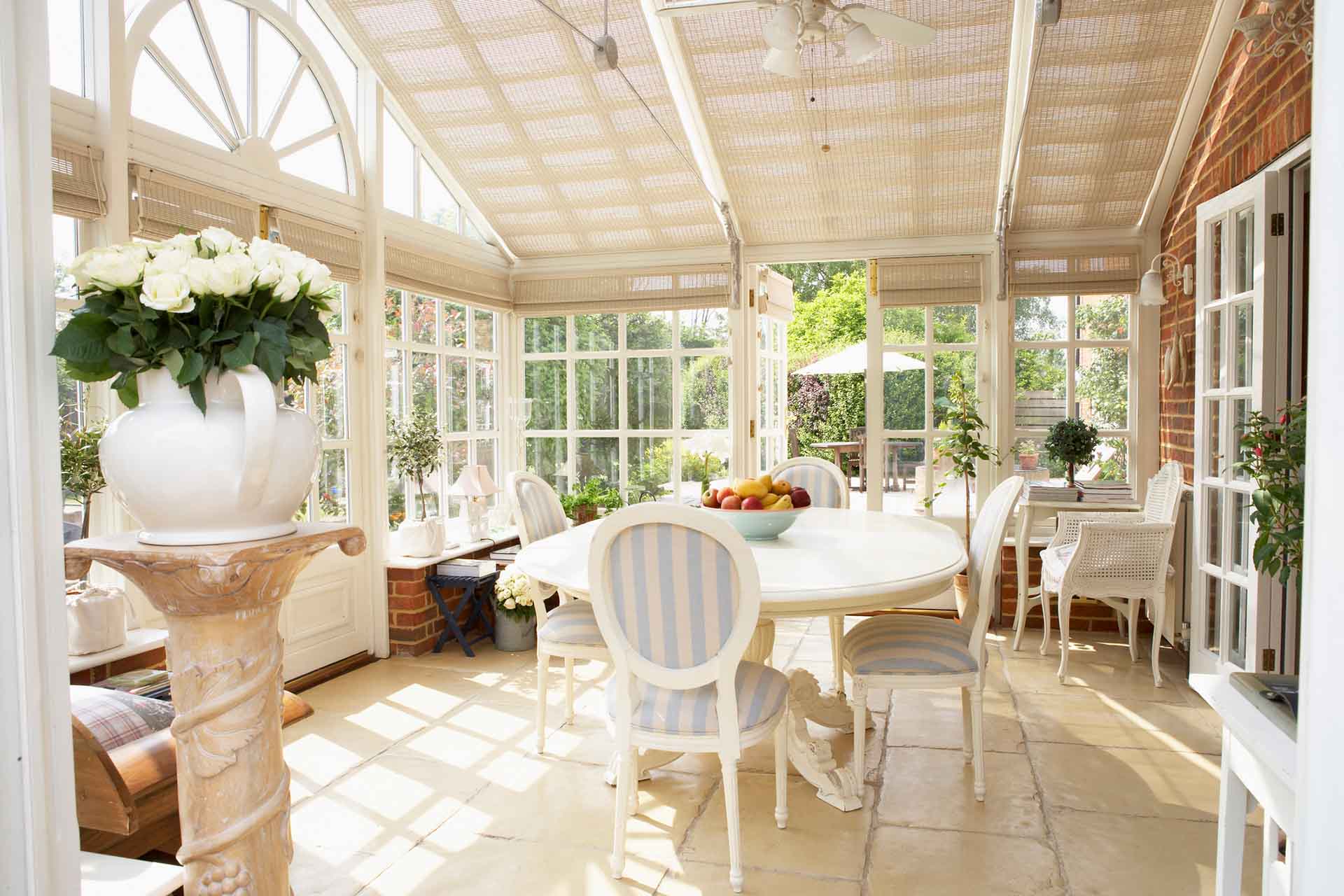
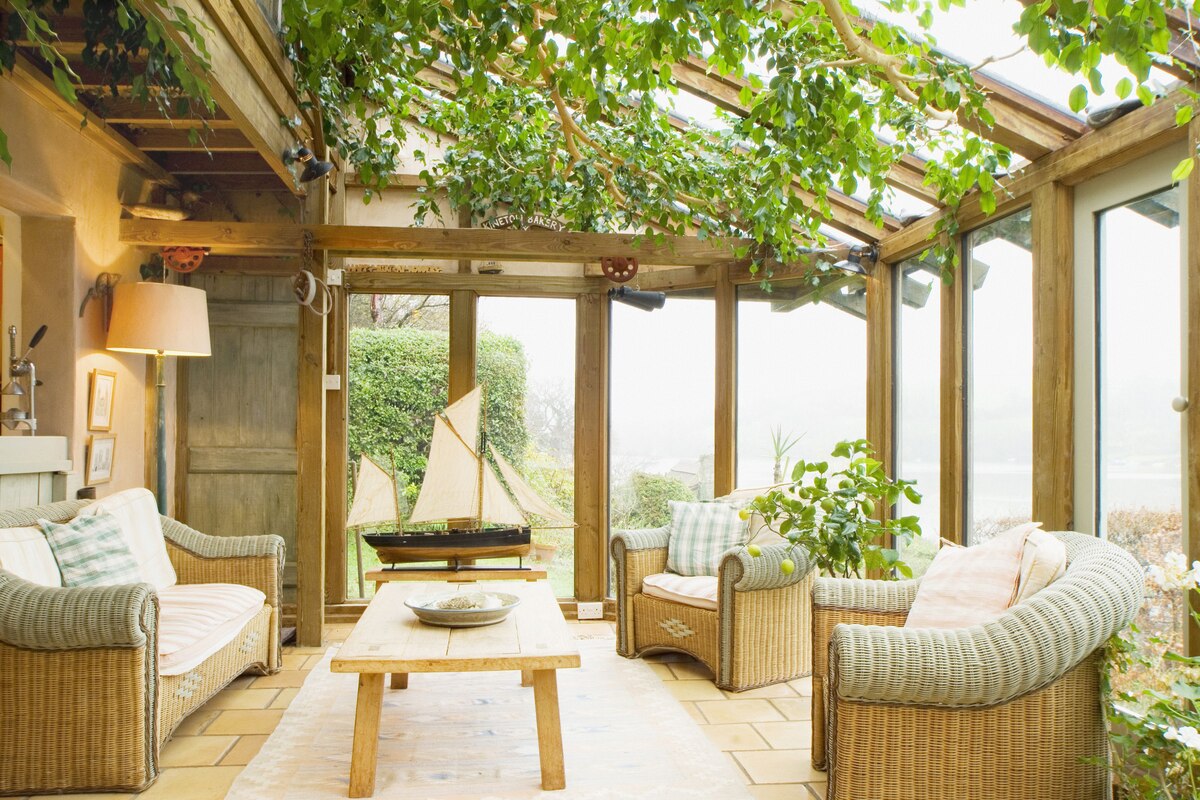
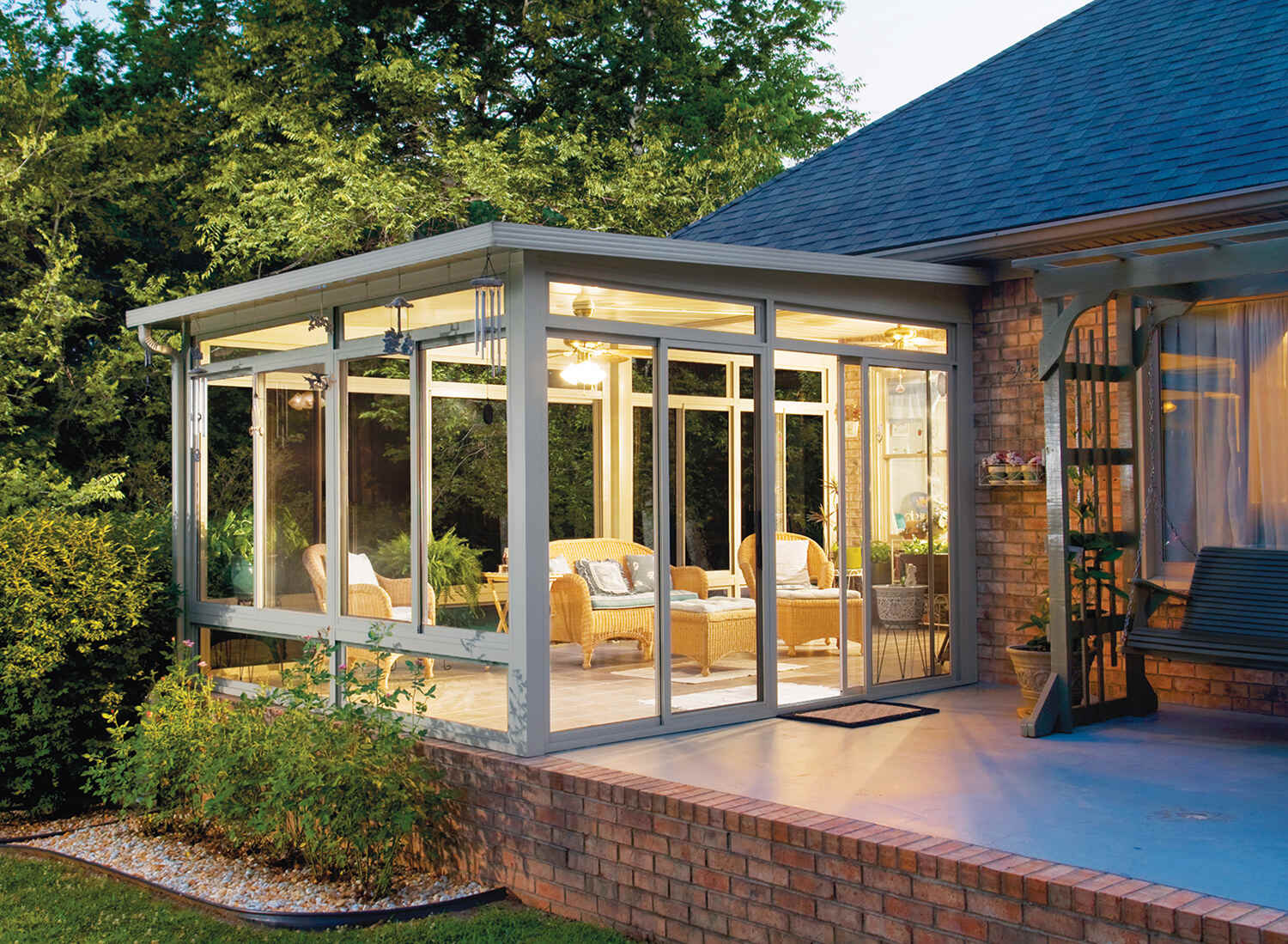
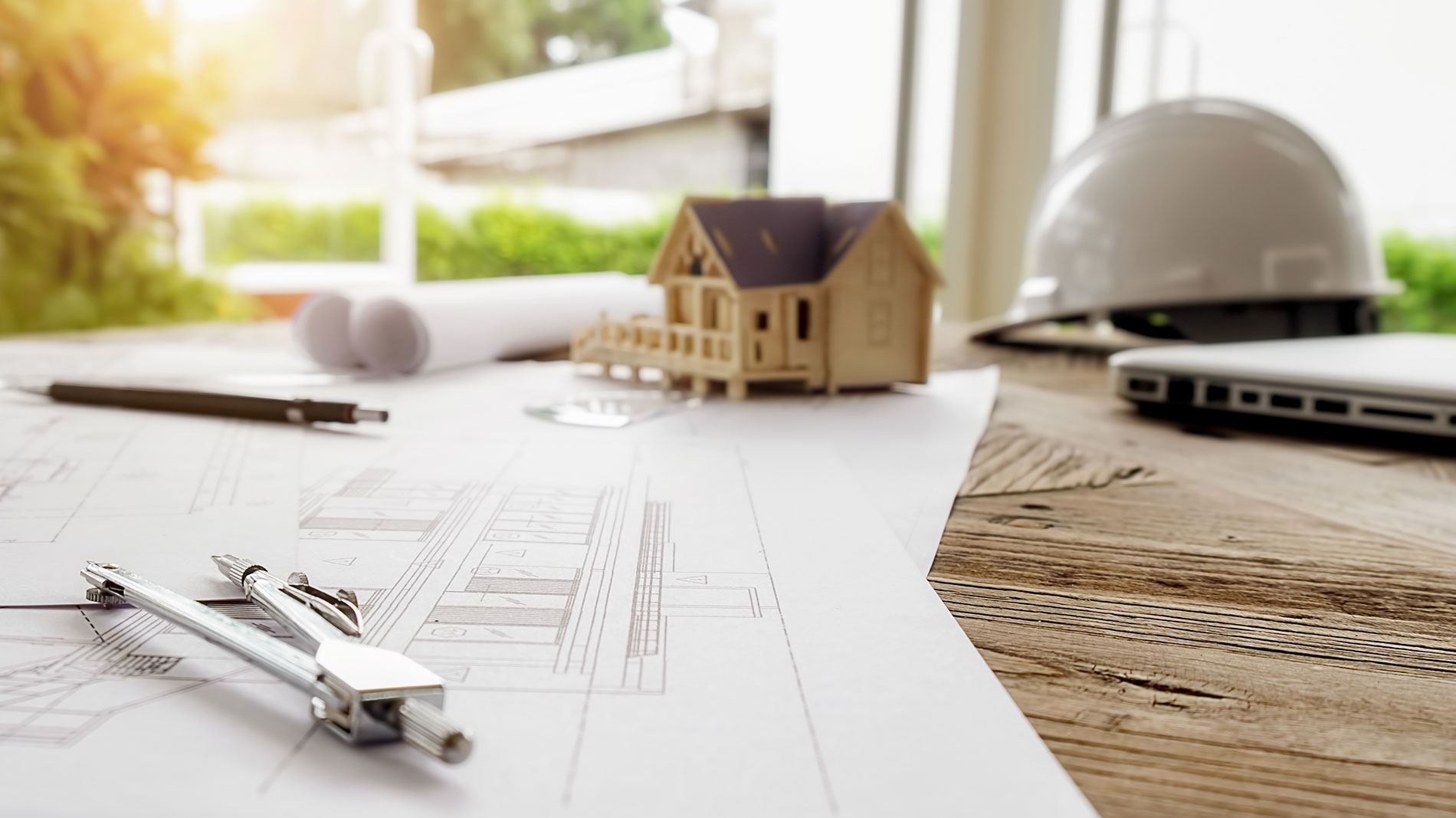

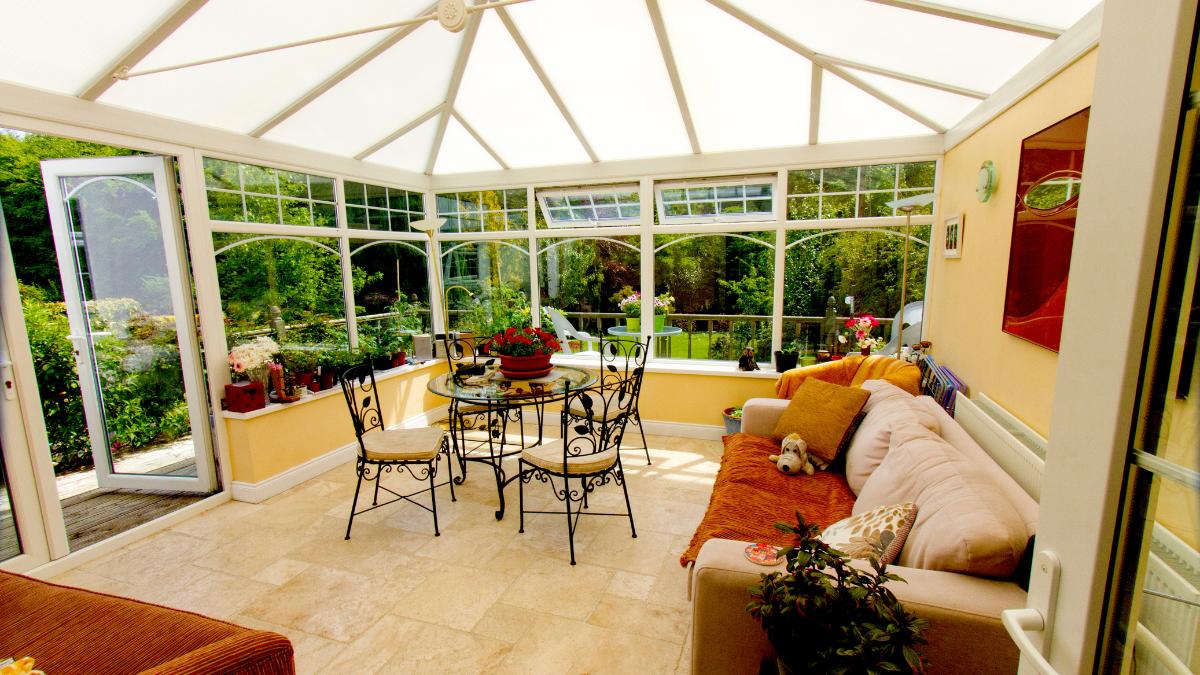

0 thoughts on “What’s A Solarium And How’s It Different From A Sunroom?”